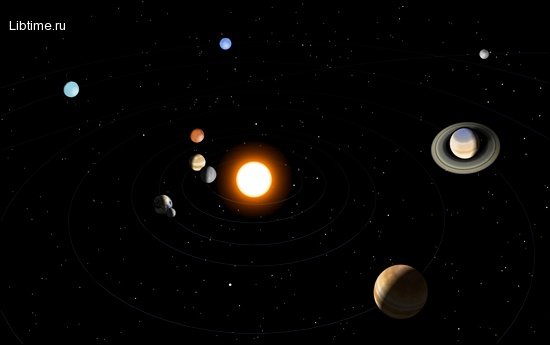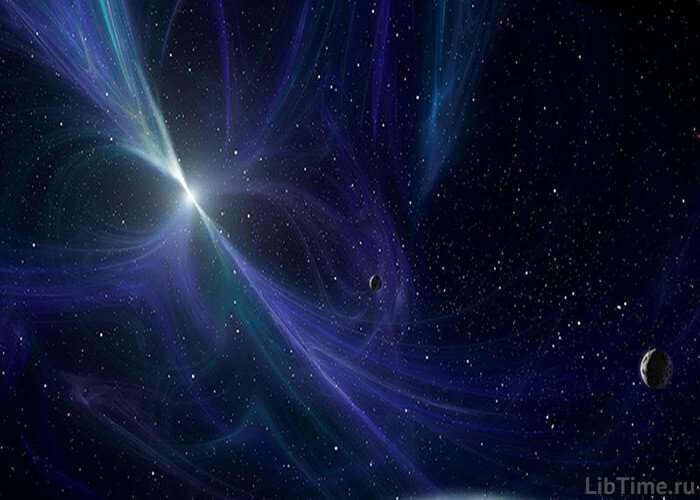Earth's motion in orbit around the Sun
The Earth not only makes a daily rotational motion around the axis (more: Scientists about the rotation of the Earth), but also has a translational motion in its orbit around the Sun, along with other planets, which we, however, do not notice. The Earth moves in its orbit around the Sun
The Earth moves in its orbit around the Sun
It seems to us that the Earth is in a stationary state, while the Sun revolves around it. To visualize the Earth's rotation around the Sun most clearly, imagine that your ship has dropped anchor and is in a roadstead near some harbor town.
You have launched a dinghy and walked to the mouth of a small river. The weather is clear and calm. The dinghy is carried along the water surface, and it seems that the banks of the river are running fast towards you, while the dinghy stands still. This is the same motionless people used to consider the Earth, observing the apparent movement of the Sun through the zodiacal constellations.
The planets of the solar system
A total of nine large planets are known in the solar system: Mercury, Venus, Earth, Mars, Jupiter, Saturn, Uranus, Neptune and Pluto. The planets have no light of their own, and if we sometimes observe them as very bright stars, it is because they reflect the light of the Sun falling on them. 
The periods of rotation of the planets around the Sun
The speeds and periods of rotation of the planets around the Sun vary depending on their distance from the Sun. Planets closer to the Sun rotate at higher speeds and make their way around it in much shorter periods of time than planets farther from the Sun.
For example, Mercury, the closest planet to the Sun, makes its way around the Sun in only 88 days. Pluto, which is at the farthest distance from the Sun compared to all other known planets, takes 249 Earth years.
The paths that the planets take around the Sun.
The paths along which the planets revolve around the Sun are called their orbits. The orbits of the planets are ellipses, or elongated circles. This was first proven by the brilliant mathematician and astronomer Johannes Kepler.
The degree of elongation of planetary orbits is different and relatively small. The orbits of Mercury and Pluto are the most elongated. As for the Earth's orbit, we can say that it is almost no different from a circle. An ellipse is not difficult to draw.
We take a small length of thread and tie its ends together. Put this thread on two pins stuck in a piece of paper lying tightly on the table, one at a distance from the other a little less than half the length of the thread. Tighten the thread with a pencil and, keeping it in this position, draw it across the sheet of paper lying on the table.
The result is an ellipse. The points at which the pins are stuck are called focuses. The Sun is at one of the focuses of the ellipses of the orbits of the Earth and all other planets in the solar system. The focuses of the planetary orbits are very close to the centers of the ellipses, which lie just midway between the focuses.
Earth's distance from the Sun
The average distance of the Earth from the Sun is about 150 million kilometers. This distance is almost 3,750 times the length of the circumference of the Earth's equator. To cover the distance from the Earth to the Sun, a train traveling at 50 kilometers per hour would have to go non-stop for about 350 years.
Even an airplane traveling at about 350 kilometers per hour would take us 50 years to reach the Sun. The Earth completes a complete revolution around the Sun in a year, or more precisely in 365 ¼ days. At this time, our planet covers a distance of about 900 million kilometers in the world space.
For more than 20 thousand years, a pedestrian must walk non-stop, walking 5 kilometers every hour to cover this distance. An airplane flying at 350 kilometers per hour would take about 300 years to make a non-stop flight over a distance equal to a year's journey of our Earth.
Every second, the Earth moves nearly 30 kilometers in its orbit. It travels about 108,000 kilometers per hour. Imagine now, how big is the annual path of the Earth and with what enormous speed it rushes in the boundless expanse of the world. We, the constant Earth passengers, feel neither shocks nor any other inconveniences in our journey through the Universe on this "ship".
We are not afraid of the abyss surrounding us - we are firmly settled on our Earth. If we could create such a flying projectile, the flight speed of which would be equal to the speed of the Earth along its orbit or at least even 11 - 12 kilometers per second, this projectile would leave the Earth in its first flight and, having overcome the force of its gravity, would be forever hidden from our eyes in the boundless world space.
If we had such a cannon, which shells would have a flight speed of about 9 kilometers per second, these shells would become eternal satellites of our planet, they would forever circle around the Earth and could not fly far into outer space or fall to Earth.
Earth's orbital path
The Earth does not move in its orbit around the Sun at the same speed. The closer it is to the Sun, the greater its speed, and conversely - as it moves away from the Sun, its speed decreases.
At aphelion (the point in the Earth's orbit that is farthest from the Sun), the Earth's speed is lowest, and at perihelion (the point in the Earth's orbit that is closest to the Sun), its speed is highest.


